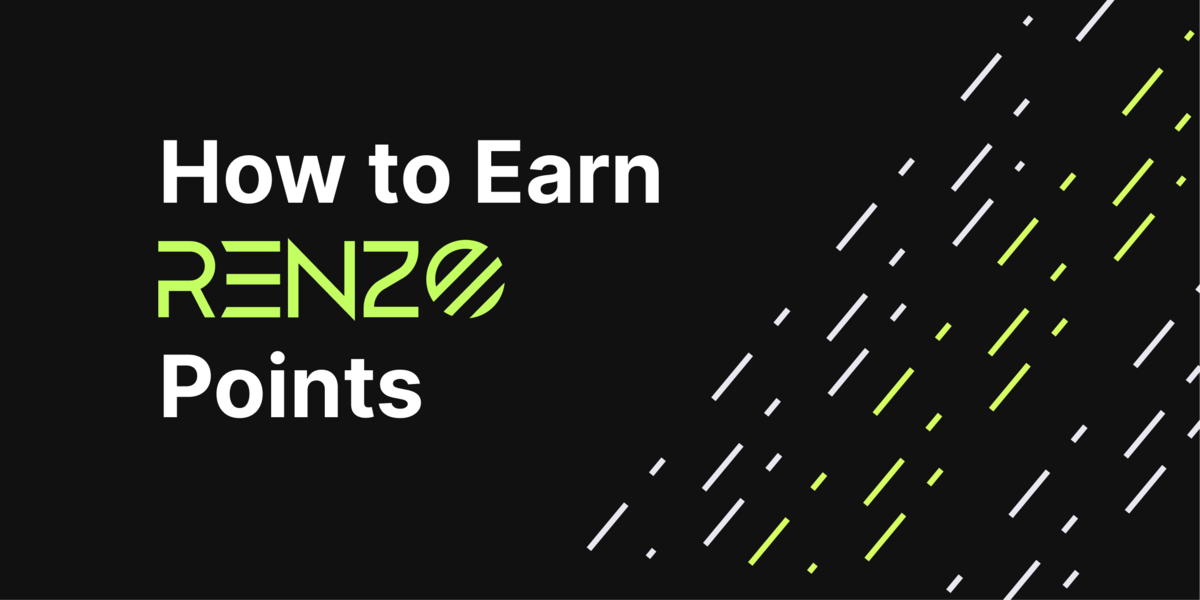What is Starknet?
Starknet is a Layer 2 solution that uses zero-knowledge (ZK) rollups to help Ethereum scale securely while improving the speed and reducing cost of transactions. It offers exceptional transaction processing capacity, reduced gas costs, and upholds the same high levels of security as Ethereum Layer 1 while also providing privacy and is one of the first protocols to integrate account abstraction (AA).
Key Takeaways
- Starknet uses ZK rollups and STARK proofs for secure and efficient Ethereum scaling to achieve over 1,000,000 TPS.
-
Starknet offers enhanced security, privacy, and scalability while incorporating account abstraction.
-
Cairo is Starknet's native smart contract language and offers optimized performance and cost-effective computations when building blockchain applications.

ZK technology is said to be the future of Ethereum, but as seen in our Taiko article, there are different types of ZK technology. Let’s explore how Starknet’s ZK technology works.
How Does Starknet Work?
Starknet uses a scaling solution known as ZK-rollups. Let’s break this term down into ZK and roll ups. The acronym ZK-STARK stands for "Zero-Knowledge Scalable Transparent Argument of Knowledge."
The rollup part is simple – it bundles transactions together, and “rolls” them “up”, hence the term rollup, before posting these lonto Ethereum as a single transaction.
ZK is short for zero knowledge proofs, which are used to instantly prove if transactions that are happening on Starknet are valid or not. It helps ensure security through the utilization of the highly secure and scalable cryptographic proof system known as STARK.
This process involves a prover, who creates a proof for some information, and a verifier, who checks the proof without sharing any information with the prover.
The prover aims to convince the verifier of a truth without revealing any additional information, and possesses a secret known as the witness that serves as evidence for the statement's validity. Without learning anything about the witness or the underlying data, the verifier's job is to verify the proof that the prover has provided.
Through an interactive process, the prover commits to the witness, the verifier challenges the prover, and the prover responds accordingly. This back-and-forth continues until the verifier is convinced of the statement's truth without knowing any sensitive information.
To illustrate the concept, let’s use a sudoku puzzle – a type of math problem.
Here is an unsolved sudoku puzzle on the left, and a solved sudoku on the right.

Do you think it is faster to solve the puzzle on the left, or to check that the solved sudoku puzzle on the right is correct?
Validating that a sudoku puzzle is solved correctly is significantly simpler and faster than solving the sudoku from scratch, as you simply need to check that all the rules are applied.
In reality, this “witness” is usually the answer to a complex math problem (far more complex than a sudoku). But the principles applied are the same, where checking is much faster than solving.
Zero knowledge proofs work by proving that a complex math problem has been solved, and time and computational resources can be saved by having one person solve the puzzle, and then allowing others to verify it. This approach allows the complex calculation of a solution to be a one-time event, eliminating the need for redundant calculations across the entire network.
This is how Starknet uses math and cryptography to securely enhance Ethereum scalability by replacing resource-intensive Layer 1 computations with more lightweight (and thus more cost-effective) Layer 1 verifications utilizing STARK proofs generated off-chain.
To summarize, Starknet uses rollups to combine multiple transactions into a single transaction that is sent to Ethereum, and uses ZK proofs to prove to Ethereum that the transactions are valid.
Benefits of Starknet
Let’s explore some of the benefits of Starknet.
1. Security
As mentioned, Starknet uses ZK STARK, which is a provably secure cryptography. On top of that, Starknet has other security features.
Starknet also leverages existing security measures from the Web2 sphere to authorize transactions, such as facial identification or fingerprint login. These security checks are already integrated into applications on Starknet, allowing users to enjoy the same level of security that people are accustomed to in their daily activities. This immediate availability of familiar security methods within the Starknet ecosystem makes it easier to onboard users as they feel safer.
Moreover, Starknet supports multisig features, adding an extra layer of security to transactions. With multisig, multiple users can sign off on a transaction before it is executed, ensuring that it meets the required threshold of approvals. This capability enhances the security of funds and reduces the risk of unauthorized access or fraudulent activities. By incorporating multisig functionality, Starknet empowers users with greater control over their assets and enables secure and transparent transaction management where needed.
2. Account Abstraction (AA)
AA is essentially a smart contract account. Think of it as combining user accounts and smart contracts into a unified account type, enabling security features like social recovery and multisignatures.
With AA, users are not required to sign every transaction using their private keys. AA tackles the limitations of Externally Owned Accounts (EOAs) by merging the two types, granting users access to inherent fail-safe mechanisms and additional verification features for transactions.
The distinction between AA on Ethereum and Starknet lies in the native integration within wallets and applications on the Starknet blockchain. In contrast, Ethereum requires additional effort from providers and wallets to integrate AA functionality. This comes not only at a cost, but takes time and effort to ensure a seamless integration.
According to Kolodny, co-founder and CEO of StarkWare, the existing legacy on Ethereum poses a significant limitation. Even with the introduction of AA, developers building applications must consider the substantial number of externally owned accounts (EOAs). In contrast, Starknet starts anew, where users exclusively interact with the network through smart wallets.
3. Scalable
As mentioned above, Starknet helps to scale Ethereum by using rollups and using ZK proofs.
It is also able to generate and verifiy proofs more quickly compared to other ZK solutions like ZK-SNARK. As the computational complexity increases, STARK proofs only see a modest rise in prover and verification times.
This allows Starknet to be highly scalable, and can have millions of TPS, while still being efficient and maintaining low gas costs.
Downsides of Starknet
1. Incompatibility of Starknet’s Native Language: Cairo
Given that Cairo is a relatively new programming language, developers who wish to code for Starknet might hesitate due to the need to learn Cairo, which is different from Solidity, the main programming language for Ethereum smart contracts.
To elaborate further, Cairo is a Turing complete programming language that supports various business logic and offers native compatibility with Starknet and was specifically optimized for ZK-rollups, providing capabilities beyond those of the Ethereum Virtual Machine (EVM) and offering more cost-effective computations. Cairo 1.0 have also launched as the upgraded Rust-inspired version of Cairo, allowing developers to write Starknet smart contracts in a safe and convenient manner.
Fortunately, there are transpilers available, such as Nethermind's Warp, which can convert Ethereum smart contracts into Cairo.
However, it should be noted that the converted contracts may not be fully optimized for Starknet, potentially leading to suboptimal performance. Ultimately, there is still a certain level of technical barrier for developers who are looking to build optimized apps on Starknet by using Cairo directly.
2. Difficulty in Achieving Adoption for AA
There are still challenges in receiving widespread adoption for AA. According to Ben-Sasson and Kolodny, co-founders of StarkWare, user education regarding this feature is crucial for its successful implementation and for cryptocurrencies to gain broader acceptance.
In addition, encouraging developers to build on Starknet and fostering their understanding of concepts like AA will require time, effort, and educational initiatives.
Starknet’s Use Cases
As mentioned in the previous paragraphs, Starknet offers several notable benefits that enhance security and is aimed at creating a better user experience (UX) through its incorporation of account abstraction technology. Let’s take a look at Starknet’s use cases.
1. Deadman Switch: Digital Will for Transfer of Personal Assets
A native use case offered by Starknet is what's referred to as a "deadman switch", made possible by the account abstraction features that have been integrated into Starknet. This feature allows users to incorporate specific logic and functionalities into their transactions.
For instance, if a predetermined event occurs, like the unexpected death of the wallet holder, the assets can be automatically transferred to pre-approved recipients, preventing the wallet from becoming a dead wallet which is inaccessible due to the permanent loss of private keys. This functionality is akin to a digital will, streamlining the process of transferring digital assets without the need for intermediaries or costly legal procedures. By enabling users to program these automated asset transfers through code, Starknet provides an efficient, seamless and highly affordable solution.
2. Automatic Recurring Payments
Visa has highlighted the potential of Starknet to facilitate seamless bill payments for users of self-custodial wallets. The concept of AA was explored as a means to implement smart contracts for automated and programmable payments, filling a gap in existing blockchain infrastructure.
Visa collaborated with the Argent crypto wallet to create a proof of concept, leveraging the Starknet scaling platform. This approach enables users to send payments automatically through their self-custodial wallet without the need for manual transaction signing. The proof of concept also suggests that this innovation opens the door for various real-world applications to be integrated into the blockchain ecosystem.
Now, let's explore how Starknet compares with other blockchain networks.
Starknet and Ethereum
Starknet is Ethereum’s Layer 2 and uses Ethereum for security. In terms of TPS, Ethereum has a TPS of less than 50, whereas Starknet can have a TPS of over one million.
In terms of Ethereum compatibility, the first question in a developer’s mind is usually “is this EVM compatible so that I can redeploy my Solidity code without much change?” – In other words, what type of zkEVM is starknet?
There are 5 different types of ZKEVM based on their compatibility as shown in the chart below.

Source: https://vitalik.ca/general/2022/08/04/zkevm.html
Starknet is a type 4 zkEVM, meaning it is a high level language equivalent and takes smart contract source code written in a high-level language (i.e. Solidity) and compiles it to some language that is explicitly designed to be ZK-SNARK-friendly.
This means that some applications that uses certain infrastructure or Solidity code will not work and will have to be changed.
As mentioned above, Starknet’s preferred language is Cairo for writing smart contracts.
Starknet vs. Optimistic Rollups
Optimistic rollups are another popular type of Ethereum L2 scaling solution used by networks such as Coinbase’s BASE and Optimism. The current TPS of optimistic rollups is in the thousands compared to the millions by Starknet.
Optimistic rollups also differ in how they validate proofs and handle data transmission compared to ZK-rollups used by Starknet.
Optimistic rollups assume all Layer 2 transactions are valid until proven otherwise, while ZK-rollups use zero-knowledge proofs to prove transaction validity without revealing specific transaction details.
Additionally, ZK-rollups send less data to the base chain since they validate transactions before posting and only share validity proofs for transaction settlement. In contrast, optimistic rollups transmit the entire transaction data, all of which are assumed to be valid unless a dispute arises. This is also why optimistic rollups have a waiting period before transactions are finalized and funds can be accessed.
Furthermore, STARK cryptographic proofs, used by Starknet, are acknowledged for their complexity compared to the security mechanisms employed by optimistic rollups. Despite being more complex, Starknet prioritizes scalability and ensures that gas fees are kept low.
Starknet vs. zkSync
Starknet is more trustless than zkSync during the setup process as zkSync requires a trusted setup, but in reality both networks are sufficiently trustless and secure for the average user as they do not hold custody of any of the user’s assets.
Starknet also has faster TPS than zkSync with a theoretical TPS of millions where as zkSync Era is currently at around 2000 TPS.
Here is a comparison table between Starknet, zkSync Era, and Optimism that I created:
| Network | Starknet | zkSync Era | Optimism |
|---|---|---|---|
| Technology | ZK-STARK rollup | ZK-SNARK rollup | Optimistic Rollups |
| Scalability | High TPS (over 1,000,000) | High TPS (up to 2,000) | High TPS (up to 2,000) |
|
Security Proofs |
Uses zkSTARKs | Uses zkSNARKs | Uses Fraud Proofs to handle Disputes |
|
Transaction Cost |
Low transaction fees | Low transaction fees | Low transaction fees |
| Decentralization | Fully Decentralized | Fully Decentralized | Fully Decentralized |
| Trustless | Does not require trusted setup | Trustless after trusted setup | Does not require trusted setup |
|
Sequencers |
Centralized for now | Centralized for now | Centralized for now |
|
Smart Contract Support |
Supports custom STARK-based code | Supports EVM-compatible code | Supports EVM-compatible code |
|
EVM Compatible |
Partially | Yes |
Yes |
StarkWare: The Team Behind Starknet
Now, let’s learn more about the team behind Starknet.
StarkWare Industries, an Israeli software company with a focus on cryptography, is the creator of Starknet. The co-founders of StarkWare, Eli Ben-Sasson and Uri Kolodny, have a longstanding relationship, and Ben-Sasson, a computer science professor at Technion, has a notable history in the blockchain realm, having co-founded Zcash, a privacy-focused cryptocurrency built on the Bitcoin blockchain.
They have a team of blockchain engineers, with a workforce of 70 dedicated individuals and the support of advisors including Joseph Lubin from ConsenSys, the company behind MetaMask.
The company secured an impressive $100 million in a Series D funding round led by Greenoaks Capital and Coatue in May 2022, with prominent investors such as Tiger Global entering the round, elevating its estimated valuation to $8 billion.
The StarkWare team also invented zk-STARKs, which are proofs designed to be scalable and transparent, utilizing lightweight hash functions to verify computational integrity without the need for trust. StarkWare is focused on the development of Layer 2 blockchains for Ethereum by leveraging zk-STARKs for enhanced computational security.
As mentioned above, zk-STARKs offer the advantage of being faster and more scalable compared to other proof systems while relying on cryptographic assumptions that are both safer and less demanding.
In addition to building Starknet, the StarkWare team developed StarkEx, which is also a Layer 2 scaling solution designed specifically for specific decentralized applications (dApps). StarkEx can be seen as a permissioned version of Starknet, where it caters to specific decentralized finance (DeFi) trading applications, including dYdX, Rhino.fi and many others. Hence, contrary to Starknet, the dApps targeted by StarkEx are a lot more specific and does not cater to the broader ecosystem like Starknet does.
Conclusion
Ethereum’s founder, Vitalik Buterin, has previously voiced his opinion that ZK-rollups will beat optimistic rollups in the long term. Given the benefits brought about by Starknet, including privacy, scalability, security and account abstraction, it will be exciting to see the potential use cases receive adoption from the wider market.
The potential for Starknet is huge, with 68 projects already onboarded onto its mainnet, and more than a 100 projects are building on Starknet inclusive of the testnet. In particular, certain projects on Starknet have started gaining the market’s attention, including JediSwap and the Argent Wallet. If you are interested, do try out some of the dApps within the Starknet ecosystem and you could stand a chance to receive an airdrop!

CJ is a business graduate that has been involved in crypto for 4 years and specializes in DeFi protocols. He is also interested in TradFi becoming DeFi, and has written for ByBit, SwitcheoLabs, and others. Follow the author on Twitter @fishmarketacad





 Or check it out in the app stores
Or check it out in the app stores
